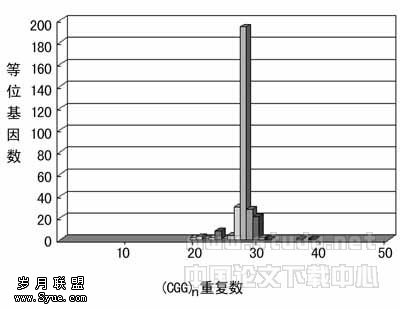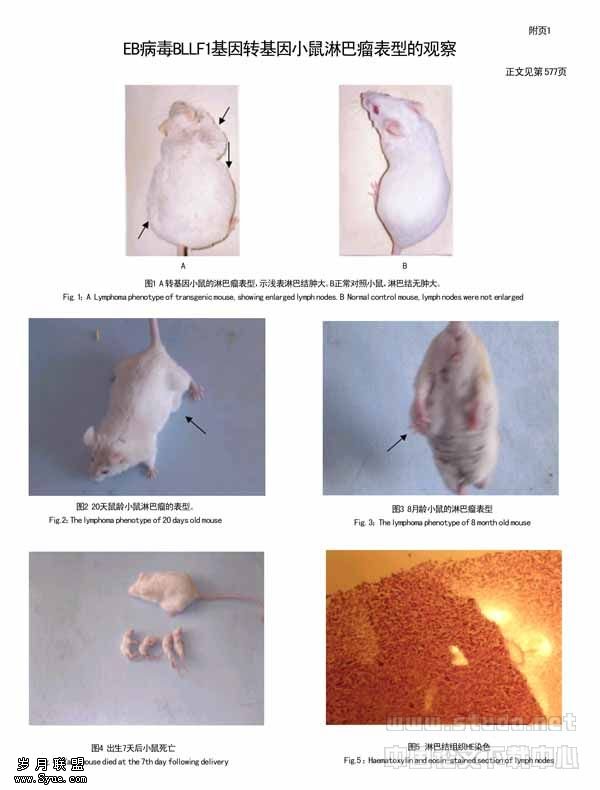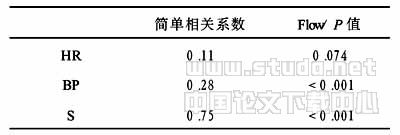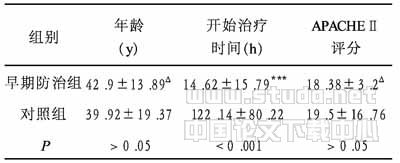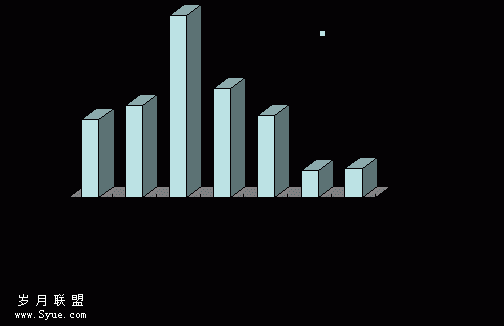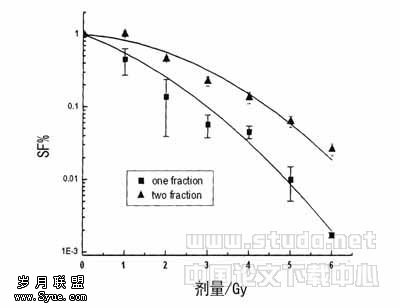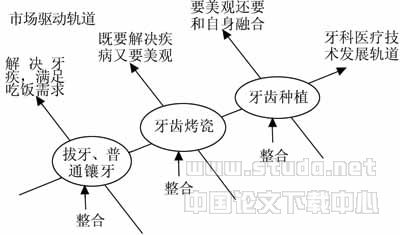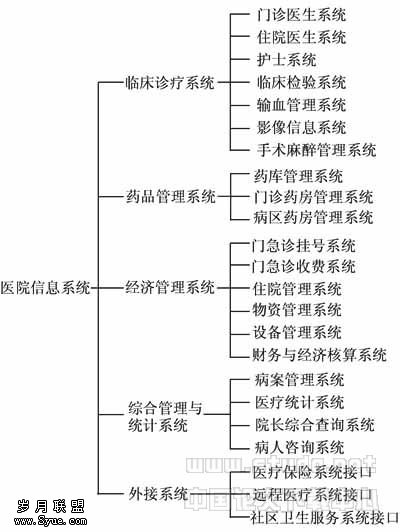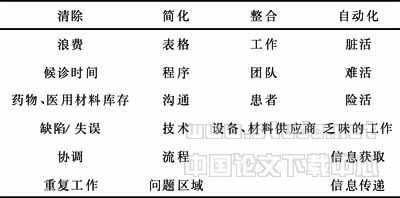明晰报告中医药随机对照试验中中药的毒副作用
【摘要】 中药虽取诸天然,但亦可含对人体有害的物质,因此,近年来中药的毒副作用越来越受到关注。中药毒副作用可以分为不可预期类、使用不当类、中药“污染”类、品种混乱类和中西药物相互作用类等。使用不当类包括处方不遵从中医药理论、过量使用、炮制及制剂方法不当和配伍不当等;中药“污染”类包括重金属、农药残留及中药产品被化学药物成分“污染”。中药的毒副作用,必须明晰报告。过高或过低估计中药的毒副作用,都会误导临床医生及患者。我们建议在中医药随机对照试验报告规范中,报告副作用时,应包括以下方面:研究药物毒副作用的背景资料、针对副作用的特异性结局评估指标;毒副作用的详细内容及其诠释。
【关键词】 中医学 中药 临床研究 随机对照试验 循证医学
1 Introduction
It is generally accepted that all health interventions, including traditional Chinese medicine (TCM), should be as safe as possible prior to adopting them in clinical practice. There is a common misconception that herbal materials - including those used in TCM, known as Chinese materia medica (CMM) are harmless to humans because they come from natural sources [1]. In fact, TCM may cause serious adverse effects (AEs) when adulterated or used incorrectly. Although the potential toxicity of specific CMM interventions has attracted more attention worldwide as the use of herbal interventions increases [2, 3], most researches on TCM continue to focus almost exclusively on establishing efficacy and effectiveness. Our previous study reported that only 30% of randomized controlled trials (RCTs) of TCM reported AEs, and most of them were too vague on this topic for readers to appropriately determine the safety of the TCM interventions studied. Better reporting on AEs in RCTs of TCM is therefore required.
The Draft Consolidated Standards for Reporting Trials of Traditional Chinese Medicine (CONSORT for TCM) were published in Chinese and English in 2007 [4, 5] to solicit feedback from experts in different specialties. In that draft, one checklist item addressed the reporting of safety of TCM interventions. Upon further consideration, it became apparent that a single checklist item to address the issue of safety was not enough. The extension of the CONSORT statement on reporting of harm [6] has addressed how to illustrate the AEs in RCT of Western pharmaceuticals. Since it is essential to transparently illustrate the AEs of RCTs for all interventions, including those used in TCM, this article aims to enhance awareness of safety issues for TCM interventions by promoting improved reporting by 1) summarizing the types of AEs reported with TCM; 2) examining the impact of AEs on RCTs with TCM; and 3) formulating the reporting structure. The corresponding revisions of the draft CONSORT for TCM are also recommended.
2 Types of AEs
CMM products used in TCM can refer to materials of herbal, animal or mineral origin. Normally, AEs associated with CMM products used in TCM could be divided into five types as follows.
2.1 Unpredictable AEs Theoretically, TCM interventions are prescribed by clinical practitioners according to the golden principle of treatment based on syndrome differentiation. Even if this principle is followed, AEs cannot be entirely avoided, and toxicity (acute or chronic) or allergic reactions may occur. For example, Caulis Aristolochia manshuriensis (Guanmutong) is a commonly used Chinese herb in clinical practice, and has attracted attention for its significant nephrological toxicity in the last two decades [7?9]. The major compound in C.A. manshuriensis, aristolochic acid, induces acute tubular necrosis in the kidney, thus resulting in significant toxicity. But based on the Chinese medicine theories, it cannot be predicted. Allergy is another AE associated with the usage of TCM interventions [10] including allergic shock, allergic asthma and allergic purpura. Although a previous history of allergy to herbs can remind the practitioner to be careful, this knowledge is of little value for patients who have not previously been exposed to these allergens.
2.2 AEs arising from improper use TCM drug must be used according to TCM principles, and improper usage may result in AEs. Typically, improper usage involves 1) prescription without following the TCM therapeutic principles; 2) over?dosage; 3) improper processing and preparation methods; 4) improper formulas.
Firstly, prescriptions should be based on the TCM treatment principles. If these principles are not obeyed, potentially efficacious interventions may produce AEs. For example, Rhizoma Coptidis (Huanglian) is very cold in nature and bitter in taste. Used properly, it can clear heat, dry dampness, drain fire and expel toxicity. Used improperly, it may damage the spleen and stomach resulting in nausea, vomiting, stomachache and loss of appetite in the short term; over the long term, improper usage may result in spleen qi deficiency. If the TCM theories are strictly followed, these AEs could be avoided.
Secondly, over?dosage is another common reason for AEs with TCM intervention. For example, most AEs related to the root of Herba Asari (Xixin) are because of high dosages. Traditionally, the limitation of daily dosage of H. Asari is less than 3 grams, although debate exists on this topic [11]. Another typical case of over?dosage is Herba Ephedra (Mahuang). Although there is no clinical evidence from any RCT to support the effect of H. Ephedra on weight loss, it continues to be used for this indication at doses much higher than the traditional dosage, which has resulted in AEs [12].
Thirdly, the processing and/or preparation method should be selected based on reducing the potential toxicity of herbs and formulas, since improper processing and/or preparation can increase the possibility of AEs. For example, Radix Aconiti (Wutou) should only be used in its processed form and should be boiled separately for at least 45 minutes before boiling together with other components in a formula to reduce the possibility of aconite poisoning, which may lead to toxicity in patients [13].
Furthermore, failure to follow basic TCM principles during the formulation of TCM formula may result in AEs as it is well known that some CMMs are incompatible with others and should not be combined in formulations. The most important guidelines are the "eighteen incompatible herbs" and the "nineteen antagonistic herbs". At the same time, an appropriate combination of CMMs can enhance therapeutic effects and reduce harmful side effects.
2.3 AEs arising from contamination Heavy metal and pesticide contamination in TCM interventions are major concerns and can result in AEs. The growing conditions as well as the processing procedures and preparation process may contribute to these contaminations [14]. They are known to have caused serious AEs, and will continue to be a serious concern. For example, mercury contamination can cause neurological disorders and nephrotoxicity [15]. It may also result in depression, irritability, forgetfulness, confusion, tremor, sensory disturbances, visual deficits, hearing loss, movement disorders and cognitive disturbances, etc [16]. Contamination with mercury in herbs can cause serious AEs [17]. In addition, contamination from non?TCM pharmaceutical products in TCM intervention is another potential source of serious AEs. For example, a clinical trial found that PC?SPES, which is a proprietary formulation containing eight herbs that was marketed by Botanic Lab (Brea, CA) from 1966 to 2002, has side effects including reduced libido, hot flashes, diarrhoea, dyspepsia, leg cramps, nipple tenderness, and gynaecomastia, pulmonary emboli deep vein thrombosis, a transient severe bleeding diathesis [18]. These side effects were due to product contamination with diethylstilbestrol and warfarin and caused the withdrawal of this formula from the market in 2002 [19].
2.4 AEs arising from misidentification of CMMs There are many cases of confusion in species of CMM, and there are many reasons for the various types of confusion. A particular herb used in TCM may have different subspecies, each with a different use. For example, Radix Glycyrrhizae is used in Zemaphyte for atopic dermatitis [15]. Sometimes, the incorrect species could take the place of the intended species, thus leading to AEs. The first reported toxicity case involving aristolochic acid in Hong Kong was caused by mistaken use of Aristolochia mollissima Hance (Xungufeng) instead of the aristolochic acid?free CMM Solanum lyratum Thunb (Baiying), and this misuse resulted in renal failure and malignant urothelial changes [20].
2.5 AEs arising from drug?herb interaction Potential herb?drug interactions continue to attract more and more attention due to possible AEs [21?23]. Although it is believed that TCM could perhaps play an auxiliary role when combined with Western pharmaceuticals in the management of some diseases, including certain forms of cancer, there is generally insufficient evidence to support the efficacy and safety of such combination therapies. Herbal products may interfere with the metabolic process of pharmaceuticals (e.g. pharmacokinetic interference), thus leading to AEs. For example, Ginseng, one of the most widely used dietary supplements, is well known to interact with warfarin. And also, ginsengosides exert a hypoglycaemic effect, which may enhance the actions of oral hypoglycaemic drugs and insulin [2]. Therefore, when these herbs and drugs are used together, possible negative drug?herb interaction could happen.
3 The need to concisely report AEs of RCT with TCM drug intervention
AEs associated with the use of TCM should be properly reported as overestimation or underestimation will constitute misinformation for both patients and health?care providers. In this area, evidence speaks volumes. Where does evidence come from? It comes from clinical practice, especially from clinical trials such as RCTs. It is well known that RCT is an effective tool to determine the efficacy of an intervention on a well?defined disease or a series of symptoms, and also provides valuable evidence regarding safety by identifying the potential risks and AEs associated with an intervention. Therefore, RCTs of TCM should transparently report not only efficacy, but all related AEs in the trial. Failure to report AEs will invite unjustified confidence in the safety of TCM. Sufficient details about AEs should be provided to enable readers to fully understand the safety of the herbs used. In addition, reports of AEs should be interpreted in relation to therapeutic efficacy, method of assessment, and underlying causality on the basis of both TCM theory and conventional medicine, to help readers assess the safety of specific TCM interventions.
4 Structure for reporting AEs
In order to give readers a comprehensive understanding about the safety of TCM interventions, background information on known or suspected side effects of each CMM constituent in the study intervention, as well as specific outcome assessment on AEs, details of reported AEs, and the interpretation of the AEs should be included in a report of AEs in RCTs of TCM.
4.1 Background information on AEs Before a TCM intervention enters into an RCT, initial analysis and review of the safety of the intervention is necessary. The safety background information of the TCM drug should be briefly summarized. The data may come from literature review or preclinical pharmacology/toxicology testing.
4.2 Specific outcome assessment Outcome measures specific to safety surveillance should be addressed, as well as details regarding other assessments related to treatment efficacy. Selection rationale, concrete assessment method, and reference standards should also be defined and explained. If the occurrence of specific AEs is to be used as one of the terminal evaluation criteria, its underlying rationale should also be determined and described.
4.3 Details of reported AEs All AEs discovered in treatment and control groups, regardless of severity, must be transparently reported. The details should include clear definition of each AE, time of occurrence, frequency in each group, degree of severity, and number of cases who withdrew or reduced their dose due to AEs. If no AEs were reported, authors should declare that "no AEs were reported", instead of not mentioning AEs at all in the RCT report.
4.4 Interpretation All AEs reported should be interpreted, in terms of both TCM theory and conventional medicine, if applicable, including a discussion of the potential underlying causality.
5 Recommendations for revision of CONSORT for TCM
To better reveal the safety issues of CMM intervention, further modifications to the draft of CONSORT for TCM, with the addition of the following descriptive text to the item numbers were indicated and summarized in Table 1.
Table 1 Recommendations for revision of CONSORT for TCM
TopicItemAdditional descriptionBackground2State the AEs of each CMM in the study intervention and explain with the theories of TCM and conventional medicine, as appropriate.Objective3If the trial addresses both efficacy and safety, the objectives should state this.Intervention5Precisely list the method to minimize the toxicity of the intervention (e.g. special preparation, prolonged boiling process, etc), if applicable.State any available information on safety assessment (e.g. acute toxicity test, chronic toxicity, and quality control on contamination, etc).Outcome6List the outcomes specific on safety issue with definition, concrete assessment method (e.g. how, when, and by whom, etc) and standard reference.Address the principles of study termination on safety issue, if applicable. Statistical method12Describe the methods used to present and determine the safety issue. Participant flow13Identify the number of withdrawals or those reducing dosages due to adverse effects in each group.Outcome and estimation17Describe the results with regard to safety for each group and the estimated effect size and its precision (e.g. 95% confidence interval).Ancillary analysis18Describe any subgroup analysis and exploratory analysis on safety issues.Adverse event19Report all AEs of each group in detail (e.g. name with clear definition in terms of TCM and/or Western medical terms, nature, time of occurrence, frequency, any recurrence, and degree of severity). If there are no adverse events to report, explicitly declare "no AEs should be reported".Interpretation20Interpret the adverse effects in terms of TCM theory and conventional medicine, and identify the potential underlying causes and any interaction with co?medication, if applicable.Suggest advance study as appropriate.
6 Conclusion
The safety of an intervention is as important as its efficacy. AEs are a significant aspect of drug safety. In order to provide a clear profile of the safety of TCM intervention(s) in an RCT report, reporters should 1) present and discuss any information with regard to safety based on literature review or preclinical studies; 2) concisely describe the assessment protocol; 3) completely list any and all AEs that occurred in their trials; and 4) discuss possible causes. We wish these guidelines can help researchers improve their reporting of AEs and thereby improve the quality of their studies, and also help readers critically evaluate the safety profile of tested interventions.
【】
1 Ernst E. Herbal medicines: balancing benefits and risks. Novartis Found Symp. 2007; 282: 154?167.
2 Corns CM. Herbal remedies and clinical biochemistry. Ann Clin Biochem. 2003; 40(pt 5): 489?507.
3 Chan TYK, Tam HP, Lai CK, et al. A multidisciplinary approach to the toxicologic problems associated with the use of herbal medicines. Ther Drug Monit. 2005; 27(1): 53?57.
4 Wu TX, Li YP, Bian ZX, et al. Consolidated standards for reporting trials of traditional Chinese medicine (CONSORT for TCM). Zhongguo Xun Zheng Yi Xue Za Zhi. 2007; 7(8): 601?605. Chinese.
吴泰相, 李幼平, 卞兆祥, 等. 中医药临床随机对照试验报告规范(征求意见稿). 循证医学杂志. 2007; 7(8): 601?605.
5 Wu TX, Li YP, Bian ZX, et al. Consolidated standards for reporting trials of traditional Chinese medicine (CONSORT for TCM). Zhongguo Xun Zheng Yi Xue Za Zhi. 2007; 7(8): 625?630.
6 Ioannidis JPA, Evans SJW, G?tzsche PC, et al. Better reporting of harms in randomized trial: an extension of the CONSORT statement. Ann Intern Med. 2004; 141(10): 781?788.
7 Vanherweghem JL, Depierreux M, Tielemans C, et al. Rapidly progressive interstitial renal fibrosis in young women: association with slimming regimen including Chinese herbs. Lancet. 1993; 341(8842): 387?391.
8 Yang L, Li XM, Wang SX, et al. Peritubular capillary injury in Chinese herb guan?mu?tong?induced acute tubular necrosis. Zhonghua Nei Ke Za Zhi. 2005; 44(7): 525?529. Chinese with abstract in English.
杨莉, 李晓玫, 王素霞, 等. 关木通致急性肾小管坏死患者肾间质微血管病变的研究. 中华内科杂志. 2005; 44(7): 525?529.
9 Mo WX. Analysis of 67 cases of kidney failure due to usage of guan?mu?tong. Zhonghua Nei Ke Za Zhi. 2007; 2(4): 524?525. Chinese.
莫文先. 67例木通中毒导致肾功能衰竭的分析. 中华内科杂志. 2007; 2(4): 524?525.
10 Li D. Literature review of eighty?five cases of allergy due to usage of traditional Chinese medicine. Fujian Zhong Yi Yao . 2007; 38(3): 44. Chinese.
李丹. 85例中药致过敏反应文献分析. 福建中医药. 2007; 38(3): 44.
11 Chinese Pharmacopoeia Commission. The Pharmaco?poeia of People's Republic of China. 2005 ed. Beijing: People's Medical Publishing House. 2005: 132. Chinese.
国家药典委员会. 中华人民共和国药典. 2005年版. 北京: 人民卫生出版社. 2005: 132.
12 Shekelle P, Hardy ML, Morton SC, et al. Ephedra and ephedrine for weight loss and athletic performance enhancement: clinical efficacy and side effects. Evid Rep Technol Assess (Summ). 2003; (76): 1?4.
13 Chen XX, Peng C. Multi?factorial research and analysis on toxicity control of lateral root of aconite. Zhonghua Zhong Yi Yao Xue Kan. 2007; 25(4): 680?681. Chinese with abstract in English.
陈学习, 彭成. 附子毒性控制的多因素探析. 中华中医药学刊. 2007; 25(4): 680?681.
14 Kang?Yum E, Oransky SH. Chinese patent medicine as a potential source of mercury poisoning. Vet Hum Toxicol. 1992; 34(3): 235?238.
15 Liang SX, Bian ZX, Moher D, et al. Improving the quality of randomized controlled trials in Chinese herbal medicine, part Ⅲ: quality control of Chinese herbal medicine used in randomized controlled trials. Zhong Xi Yi Jie He Xue Bao. 2006; 4(3): 225?232. English with abstract in Chinese.
梁士贤, 卞兆祥, Moher D, 等. 提高中草药随机对照试验的质量Ⅲ: 中草药的质量控制. 中西医结合学报. 2006; 4(3): 225?232.
16 Ernst E, Thompson Coon J. Heavy metals in traditional Chinese medicines: a systematic review. Clin Pharmacol Ther. 2001; 70(6): 497?504.
17 Gao ZJ, Zeng BC. Two poisoning case reports on heavy metal medicinal herb preparation. Zhonghua Yu Fang Yi Xue Za Zhi. 1980; 14(2): 117?118. Chinese.
高志钧, 曾炳才. 重金属中药制剂中毒二例报告. 中华预防医学杂志. 1980; 14(2): 117?118.
18 Pandha HS. Kirby RS. PC?SPES: phytotherapy for prostate cancer. Lancet. 2002; 359(9325): 2213?2215.
19 Kosty MP. PC?SPES: hope or hype? J Clin Oncol. 2004; 22(18): 3657?3659.
20 School of Chinese Medicine, Hong Kong Baptist University. Easily confused Chinese medicine in Hong Kong. Hong Kong: Chinese Medicine Merchants Association. 2007.
21 Skalli S, Zaid A, Soulaymani R. Drug interactions with herbal medicines. Ther Drug Monit. 2007; 29(6): 679?686.
22 Mills E, Wu P, Johnston BC, et al. Natural health product?drug interactions: a systematic review of clinical trials. Ther Drug Monit. 2005; 27(5): 549?557.
23 Seely D, Stempak D, Baruchel S. A strategy for controlling potential interactions between natural health products and chemotherapy: a review in pediatric oncology. J Pediatr Hematol Oncol. 2007; 29(1): 32?47.


